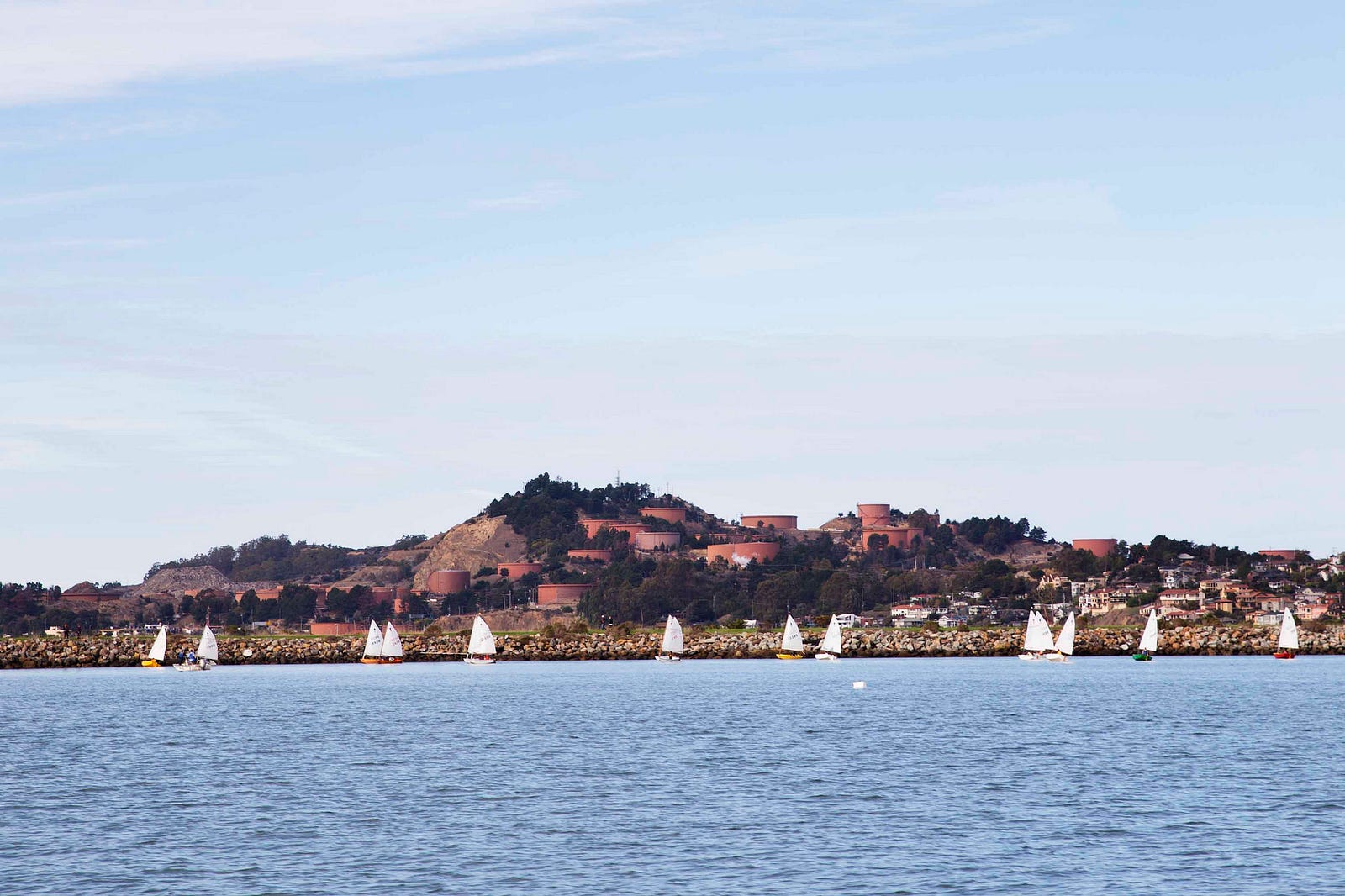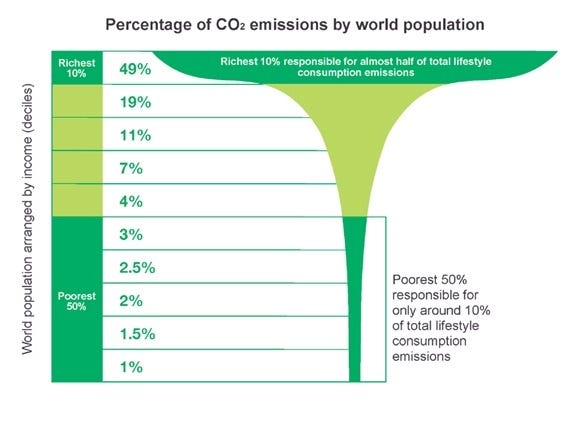- Blog
- Forests
- False Climate Solutions
- California plays fast and loose with climate science and environmental justice
California plays fast and loose with climate science and environmental justice
by Gary Graham Hughes, California advocacy campaigner

Donate Now!
Your contribution will benefit Friends of the Earth.
Stay Informed
Thanks for your interest in Friends of the Earth. You can find information about us and get in touch the following ways:
In the public relations bounce coming out of the high-profile climate meetings in Paris, backslapping and brand promotion abound as California trumpets its role as a global climate leader. California often touts the state government’s public and bi-partisan rejection of climate change denial along with the legislated commitment to climate action embodied in the landmark Global Warming Solutions Act of 2006 as evidence of the leadership that the state offers.
Now, a highly controversial proposal to expand California’s Cap-and-Trade system to include greenhouse gas emissions offsets based on tropical forest carbon credits raises new questions about the adequacy of the state’s climate change mitigation methodologies. The proposal also begs the question of why Southern forest communities must bear the brunt of harmful impacts of these offsets while California polluters rake in the benefits. Cap-and-Trade, which is ostensibly intended to reduce net greenhouse gas emissions, is where California’s most egregious polluters attempt to cover up their atmosphere-destroying and community-poisoning activities through the buying and trading of carbon credits to pay for efforts that are supposed to “offset” the damage done from ongoing industrial emissions.
Californians and global citizens are coming to soberly understand that California’s climate leadership may not be designed to protect people and the planet, but rather to protect polluters and their profits.
A recent independent investigative article, “Cap and Clearcut,” exposes faulty assumptions underlying California’s Cap-and-Trade system. As a result of this and other public scrutiny, Californians and global citizens are coming to soberly understand that California’s climate leadership may not be designed to protect people and the planet, but rather to protect polluters and their profits.
For a global context, consider the declarations by a number of high-profile climate scientists, including the renowned Dr. James Hansen, that the Paris agreement failed to meet the most basic requirements of what science suggests needs to be done to avert the worst impacts of global climate disruption — to reduce emissions now.
Then consider, in contrast to the congratulatory backslapping in Paris by California leaders, the diverse chorus of voices denouncing the agreement for abandoning the global poor and most vulnerable communities, including indigenous peoples around the world. There are legitimate concerns that climate justice, which exists at the intersection of environmental degradation and the racial, social and economic inequities it can perpetuate, was simply not served in Paris, regardless of the fanfare and rhetoric of many political, business and mainstream environmental leaders.
Also notable is the fact that the term “fossil fuels” is not used once in the textof the Paris agreement, while in contrast the word “forests” is used more than a dozen times. That provides more than a hint of the shifting of responsibilities for addressing greenhouse gas emissions.

For its part, California’s latest attempt to cover up ongoing industrial emissions is to expand its carbon markets and begin to use forests in tropical countries to offset industrial pollution here at home.
California’s new forest carbon offset scheme proposes using a mechanism called Reducing Emissions from Deforestation and forest Degradation. REDD would allow California’s polluters to keep polluting at home and to supposedly make up for it by expanding its carbon market into forests in Mexico, Nigeria, Indonesia, Brazil and elsewhere. The idea is that industrial emitters here will pay for Southern countries to protect forests that would presumably otherwise be deforested or degraded; and in turn these “saved” forests supposedly sequester an amount of carbon from the atmosphere equal to that of the emissions here (i.e., an “offset”). Staff from the California Air Resources Board have been coordinating with REDD proponents for years in order to expand California Cap-and-Trade to include REDD, and CARB has communicated intent to rapidly advance with rulemaking to finalize REDD offsets in the first half of 2016.
While CARB economists design financial devices based on elusive carbon molecules, leading land carbon scientists drive home the reality that “for all practical purposes, CO2 emissions are irreversible” and that there is “no option” to continue these emissions under the “erroneous assumption” that they “can be offset in the long run by the uptake of CO2 by land systems” such as forests. Even if all global forest ecosystems were returned to their pristine old growth maximum carbon storage capacity (a fantastic proposition no doubt), at current rates of fossil fuel consumption only a couple of decades of human fossil fuel emissions could be potentially offset. Such scientific considerations are not sufficient to curtail the enthusiasm of California REDD proponents for having found what they proclaim to be the most cost-effective way for rich countries to reduce their emissions — even if emissions from burning fossil fuels are not really being reduced at all.
Parallel to the climate science evidence that calls into question the offset premise of REDD are the litany of documented problems on the ground in project implementation. Conflicts regarding restrictions on access to democratic decision-making, the failure to apply the internationally recognized right of Free and Prior Informed Consent of indigenous peoples, and the unequal distribution of benefits are examples of problems that perpetually plague REDD implementation in forests around the world.
It’s not just that expanding California Cap-and-Trade into REDD-based offsets is an environmentally and socially dubious proposal on a global level. It also has potential for severely exacerbating the worst impacts of the system on environmental justice front-line communities here at home. While tropical forests and indigenous peoples are tossed about by agency staffers and free market conservation proponents proclaiming to save the world, communities living closest to the largest emitting facilities in California, which are disproportionately communities of color, continue to suffer from ongoing toxic pollution and related public health issues.

One of the seldom spoken truths about California’s climate leadership is how long-standing environmental justice concerns associated with the use of offsets in California Cap-and-Trade remain as open festering sores, wounds that climate policy makers in Sacramento continue to downplay and diminish, and that many established conservation professionals fail to integrate adequately into their climate change advocacy. This includes the brusque manner in which the debate about of the inclusion of REDD in California Cap-and-Trade has stifled the participation of critical voices from affected communities in Brazil, Mexico, Nigeria and Indonesia — not to mention Richmond, Wilmington, Pittsburgh and other California communities that suffer the daily brunt of toxic emissions.
It is this undemocratic dynamic that excludes critical voices from affected communities that makes California’s climate leadership leaving so much to be desired. California climate leaders bluster about climate action as though the state were the carbon sheriff here to save us from the climate change bandits, when the hard reality is that dubious offset accounting tricks and exclusionary political processes, popular with and overtly preferred by the polluting industries, may very well be putting California more in the role of global climate bully than global climate hero.
At this point in the development of California climate policy, by currently focusing superficially on tropical forests overseas instead of prioritizing cleaning up our act at home, California is exercising a certain sort of upside-down-world logic when it comes to accountability for damage to the atmosphere and living systems of the world. A right-side-up approach to understanding global climate justice is based on the fundamental understanding that it is the top richest 10 percent of the world that is responsible for approximately 50 percent of global lifestyle emissions, while the poorest 50 percent of the world, a full 3.5 billion people, many of whom live in the tropical rainforest regions coveted by California Cap-and-Trade for future carbon credits, are only responsible for approximately 10 percent of global lifestyle emissions.

These lifestyle emissions attempt to account for the resource and commodity consumption of the richest people on the planet, including Californians, as a means of placing responsibility for pollution directly where it belongs. This includes the consumption in California of oil, minerals, wood and paper products, palm oil and other commodities that come from tropical forest regions such as the Amazon. It is well understood that it is the production and extraction of these commodities and resources that is the primary motor of destruction of tropical rainforests around the globe.
The failure of the Paris climate accords to address this extreme global carbon inequality is unfortunately replicated in the current proposal to expand California Cap-and-Trade with REDD based offsets. The proposal places the bulk of the responsibility for global climate change on affected communities in the tropical regions of the planet, instead of in first world regions such as California where the great majority of the world’s fossil fuels and commodities are ultimately consumed.
There is still much to be determined when it comes to the plan of California to expand Cap-and-Trade into REDD-based offsets. Opposition is growing as the public learns more about the details and inadequacies of the REDD offsets proposal and how it shines a light on the injustices in California climate policy in general.
Exposing the contradictions between the public relations veneer of California climate leadership, and the actual way such leadership plays out on the ground, in forest communities and in the atmosphere, is the underlying opportunity that comes from challenging California policy makers on this tropical forest offsets policy proposal. It is increasingly apparent for climate justice activists that expressing strict opposition to the proposed inclusion of international forest-based offsets in California Cap-and-Trade is crucial for halting a socially unjust, economically inequitable, and environmentally dubious plan for responding to climate change. Clearly the time has come to hold California’s climate leaders accountable while they play fast and loose with science, justice, democracy, and, above all, our futures.
